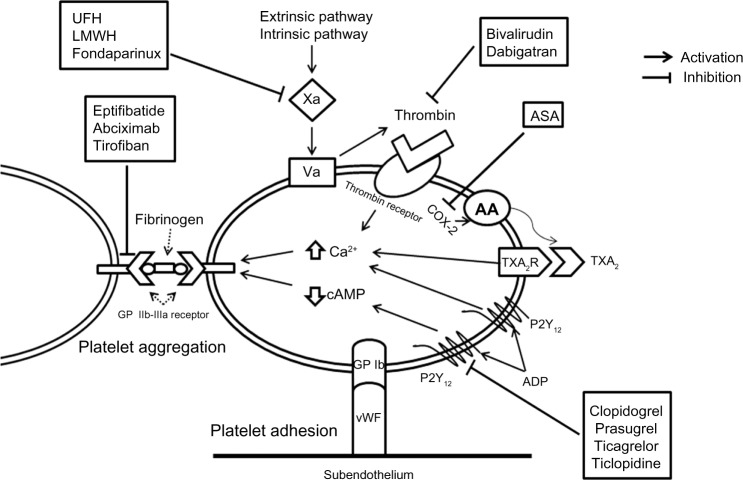Figure 1.
Platelet activation pathway and site of action of antiplatelet agents.
Notes: Platelets are activated via several different membrane receptors, resulting in platelet adhesion and aggregation. When endothelium is injured, the subendothelium exposes von Willebrand factor that binds to GP Ib, causing platelet adhesion. Thrombin, TXA2, and ADP bind to the thrombin receptor, TXA2 receptor, and P2Y12, respectively. This causes an increase in intracellular calcium (Ca2+) and a decrease in cAMP, leading to platelet contraction and GP IIb/IIIa activation. Activated GP IIb/IIIa on adjacent platelets bind to fibrinogen (final common pathway) leading to platelet aggregation and thrombus formation.
Abbreviations: AA, arachidonic acid; COX-2, cyclo-oxygenase-2; cAMP, cyclic adenosine monophosphate; ADP, adenosine diphosphate; ASA, aspirin; UFH, unfractionated heparin; LMWH, low molecular weight heparin; TXA2, thromboxane A2; GP, glycoprotein; vWF, von Willebrand factor; TXA2R, thromboxane A2 receptor.

